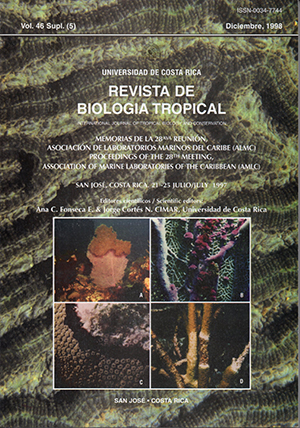Abstract
Fishing with a variety of methods and gears, including traps, is allowed within the waters of Virgin Islands National Park (St. 10hn, U.S. Virgin Islands). Randall's 1 9 6 1 observation of the effects of overushing in nearshore waters off Sto John has been followed by three and a half decades of reports documenting the declining reef fish catch in the Virgin Islands and much of the Caribbean. To assess the state of the trap fishery in St. John waters, traps set by fishers were visually censused in situ in 1992, 1993 and 1994 both inside and outside park waters. Fifty-nine species of fishes representing 23 families and 1340 individuals were identified from 285 traps set in five habitat types (coral reef, octocoral hard-bottom, seagrass beds, algal plains and non-living substrate). The greatest number of observed traps were in algal plain (31%) and gorgonian habitat (27%), pointing to greater exploitation of deeper, non coral habitats. Coral habitat accounted for the most species trapped (41), whereas the mean number of fishes per trap was highest in algal plain (5.7, se=0.6). Six species made up 51% of all fish observed in traps. The Acanthuridae was the most abundant family. Species composition and number of fishes per trap were similar inside and outside park waters. Scarids and serranids were more frequently observed in traps inside the park. Between 1992 and 1994. patterns in the data emerged: smaller numbers of fish per trap; shifts to smaller size classes; fewer serranids, lutjanids, sparids, and balistids, and all feeding guilds except herbivores per trap; more acanthurids per trap. Compared with other trap data from the Virgin Islands and the Caribbean - Florida region, the mean number of fish and biomass per St. John trap are low, serranid numbers are low, and acanthurid and herbivore numbers are high. The reef-associated fishes of St. John appear to be overexploited.
##plugins.facebook.comentarios##

This work is licensed under a Creative Commons Attribution 4.0 International License.
Copyright (c) 1998 Revista de Biología Tropical
Downloads
Download data is not yet available.


